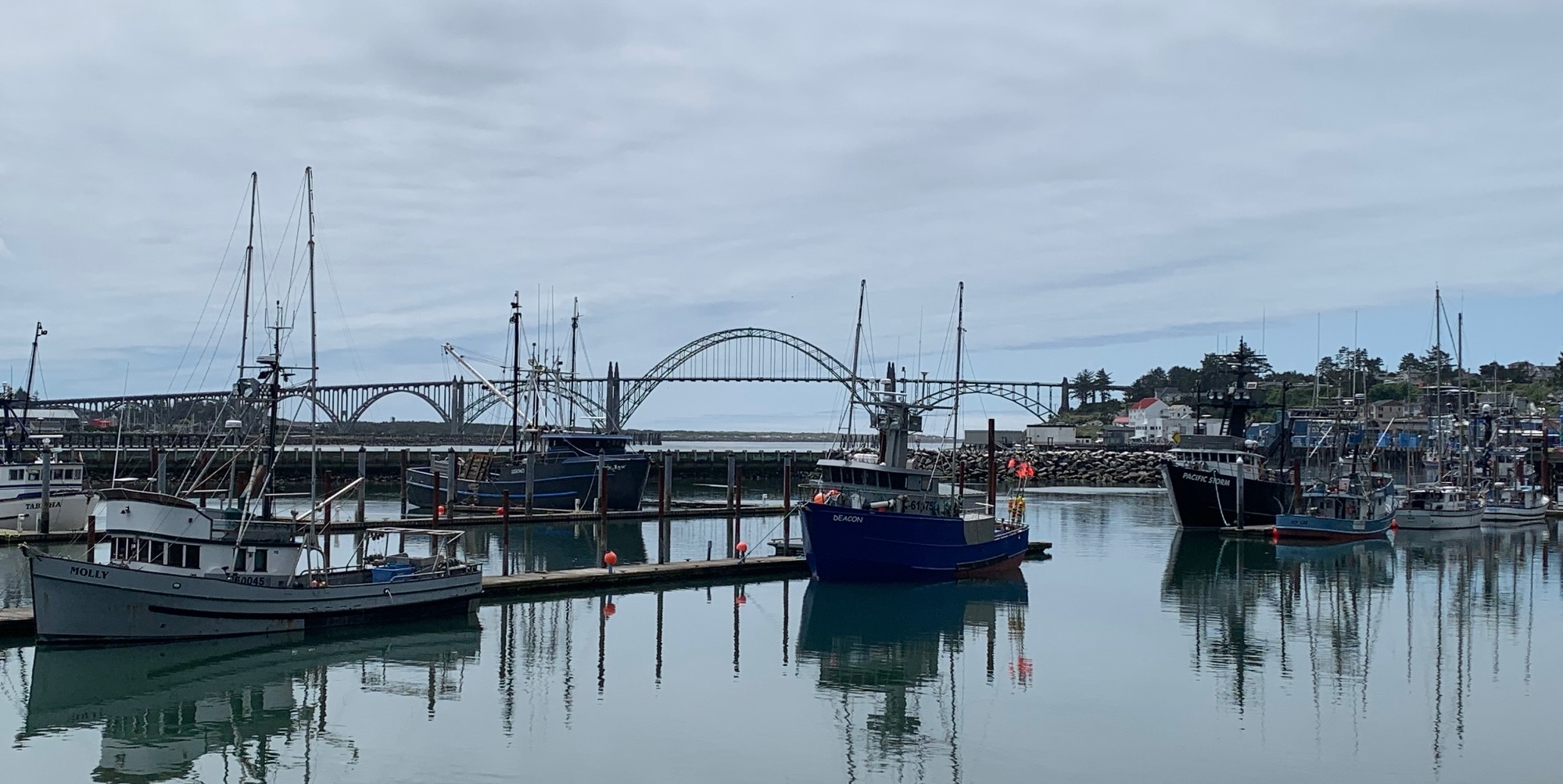
By KYRA BUCKLEY/Oregon Public Broadcasting
Local Ocean restaurant on Newport’s bayfront is the kind of place where you might have lunch next to the fisherman who caught it.
That’s according to Laura Anderson, co-founder of the more than 20-year-old restaurant.
“Creating market opportunity for fishers and showcasing local species were really what drove the founding of the restaurant,” Anderson said over a tuna wrap with fries on a recent afternoon.
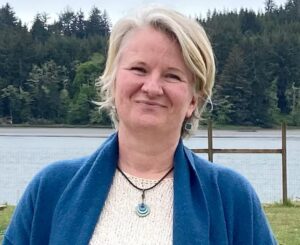
The tuna in her wrap comes directly from Oregon fishers, Anderson said. Local Ocean has built its business around buying as much fish as it can directly from Newport’s fleet of commercial fishing boats.
That makes Local Ocean an anomaly. The majority of seafood sold at restaurants on the Oregon coast doesn’t come from Oregon, according to a 2023 report commissioned by the Oregon Coast Visitors Association. Meanwhile, most fish from Oregon’s commercial fleet are exported to foreign markets.
Although restaurants like Local Ocean are working to convince diners that locally-sourced fish is delicious and easy to incorporate into most meals, on the whole, Americans don’t choose fish as their daily protein source. By contrast, fish is the number one protein source in most Asian countries, where it is regularly included in daily meals. The lack of fish consumption here makes access to foreign markets especially important for fishers.
That was the challenging market environment facing Oregon’s fishing industry before President Donald Trump made two major moves during the first few months of his second term — cuts to the federal workforce and tariffs that are causing foreign buyers to retaliate against U.S. sellers.
The International Trade Court ruled in May that the bulk of Trump’s tariffs were illegal after Oregon and 11 other states sued the administration over the import taxes. But the U.S. Court of Appeals froze that decision as it considers the administration’s appeal.
Many economists say the back and forth on tariffs have already done lasting damage to U.S. industries.
“Fishing and having a life in the fishing industry is chaotic,” said Heather Mann, executive director of Newport-based Midwater Trawlers Cooperative. “There’s ups and downs for all variety of reasons from season to season, year to year. So a lot of people will say, ‘Oh my gosh, the tariffs. The tariffs, how is that impacting you?’ And my response right now is, in terms of seafood and exporting seafood, ‘We’re uncertain. We don’t know’.”
Federal officials key
The fishing industry, like many others, relies on global trade. Oregon exported nearly $50 million worth of seafood to global markets last year, according to the U.S. Census Bureau’s Foreign Trade Division.
In the same period of time, $102 million worth of imported seafood flowed through Oregon. Some of it ended up on plates in coastal restaurants, some of it went to Oregon grocery stores, and a lot of it was ultimately shipped to other states for consumption.

Mann’s organization is a nonprofit trade group representing more than 30 vessels that fish on the Pacific Ocean. She’s been at the helm for just over a dozen years. Mann said the current back-and-forth on tariffs creates market uncertainty.
However, people who make a living pulling fish out of the ocean have contended with numerous challenges in recent years, from tariffs and other global trade disruptions to wars, the pandemic and natural disasters.
In the immediate term, Mann said fishers need three things to do their job:
- Independent scientific surveys that measure the health of a fishery;
- Stock assessments that take that information to help determine where, when and how much it’s ok to fish of a certain species; and
- Trained workers to complete those tasks on an ongoing basis.
“Without those three things,” Mann said, “exporting fish doesn’t matter because we won’t be able to fish.”
There are eight Federal Fishery Management Councils responsible for making sure these surveys and stock assessments happen. Mann is involved in the Pacific council, as are scientists from Oregon State University, people from state agencies like the Oregon Department of Fish and Wildlife, and federal workers at the National Oceanic and Atmospheric Administration.
“What we’re facing right now is a large cut in the funding for NOAA Fisheries,” Mann said, referring to the agency responsible for marine resources, including employees who conduct stock assessments. “We don’t know the extent yet of what that will eventually be through the appropriations process, but we do know it’s not going to be business as usual.”
The Trump administration’s budget proposal for 2026 that passed the U.S. House and is on its way to the Senate would cut 30% of the operations and personnel budget for NOAA’s fishery management department.
Mann agrees that government agencies could be trimmed down. But she’s concerned no one involved in the complex process of surveys and stock assessments has been consulted about where NOAA cuts should land.
Mann traveled to Washington, D.C. recently to deliver that message to federal lawmakers, and Midwater Trawlers Cooperative is getting the word out to state officials.
The power of the permit
Fisheries economist Gil Sylvia said prior to the 1970s, fisheries were open access with few regulations. In some cases, it led to overfishing, making it hard for fishermen to maintain consistent supply.
Sylvia moved to Oregon more than 30 years ago to work at Oregon State University. He’s now officially retired from the university, but he’s still based on the Oregon coast, where he serves as president of the Port of Newport commission.
Sylvia says managing fisheries today is based on assessing the stocks themselves.

“The whole fishery is based on the amount of fish you can catch,” Sylvia explains. “The amount of fish you can catch is based on assessment of the size of the stock, and then calculations based on fish growth and other characteristics of the stock to determine how much fish could be caught on a sustainable basis.”
To participate in the fisheries, boats obtain a permit. Sylvia said the permit has two overall functions: to regulate who is fishing on the water, and to encourage the long-term health and value of the fishery.
“These permits were designed to be bought and sold in a marketplace,” Sylvia said. “So once they were allocated by the state government or federal government, then you could sell it afterwards. And this idea of buying and selling permits is to try to create a type of asset that could – if fisheries were managed – increase the value of that permit.”
Some permits can be worth $1 million or more, he said, depending on the fishery. Often they need to be renewed, sometimes each season, with state and federal agencies.
Overall, Sylvia said it’s a complicated process that’s evolved over decades of discussion involving scientists, industry reps, and government officials. It’s also required by federal law.
It would take another act of Congress to repeal the law. No such proposal is on the table. But cutting federal workers who conduct fish surveys, stock assessments, and permit renewals could prohibit fishers from starting seasons on time, or at all.
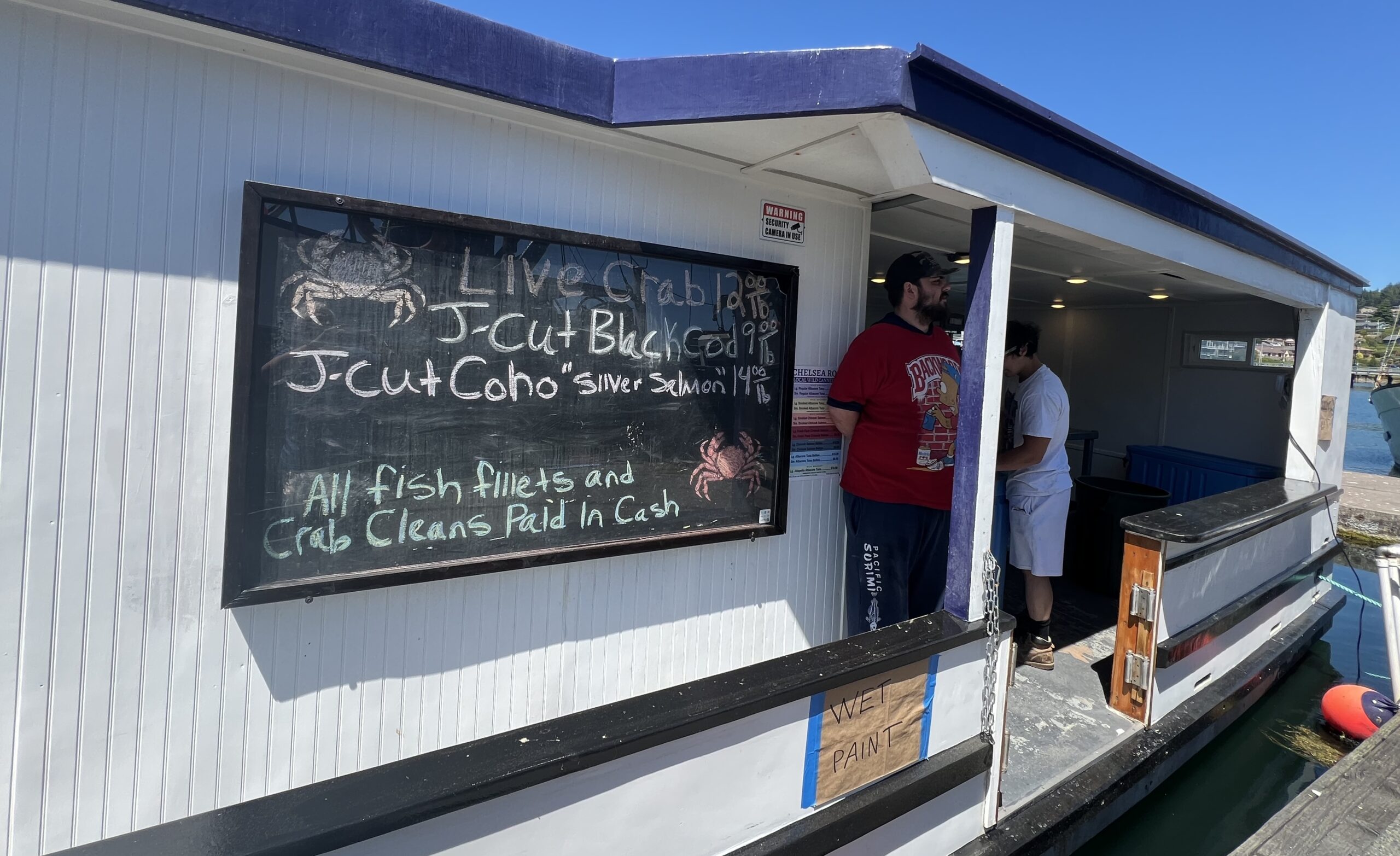
Low demand for local fish
Sylvia said Oregon has multiple fisheries off the coast including crab, salmon, pink shrimp, albacore tuna, and groundfish species called Pacific hake or whiting.
“Pacific hake, whiting – most of that is not consumed domestically, but is sold,” Sylvia said. “And that’s our biggest fishery by volume. And most of that is sold overseas.”
As global trade tensions continue, it could mean fishers and the processors that get their product ready for market will need to find other outlets to sell to. Countries have responded to Trump’s unpredictable rollout of tariffs by buying less from U.S. producers.
Meanwhile, around 80% of fish consumed in the U.S. is imported, according to the U.S. Department of Agriculture.
Unlike other trade imbalances — such as in manufacturing, where the causes include lack of low-cost production — there are plenty of fish in American seas being caught. The problem, instead, appears to be lack of demand.
So why can’t the U.S. create a seafood industry where there is sufficient domestic demand for the fish being caught?
“Because that’s not what consumers want,” Sylvia said. “I’m telling you, it’s that simple.”
Americans eat less fish than other countries. The fish we do eat is often at restaurants, or is in frozen products. A lot of imported fish is farmed, making it cheaper than wild-caught U.S. options.
The federal government seemed to acknowledge in May that global trade barriers and low domestic demand are financially hurting Oregon fishers. The USDA responded by buying $16 million worth of Oregon pink shrimp through a program that buys surplus food to raise domestic demand in economically turbulent times.
Advocates for the fishing industry say it will take more larger initiatives like that to help increase domestic demand and ease financial strain on fishers. Additionally, small-scale solutions can also help expose more people to Oregon seafood, even if that just makes a minor dent in challenges facing the industry.
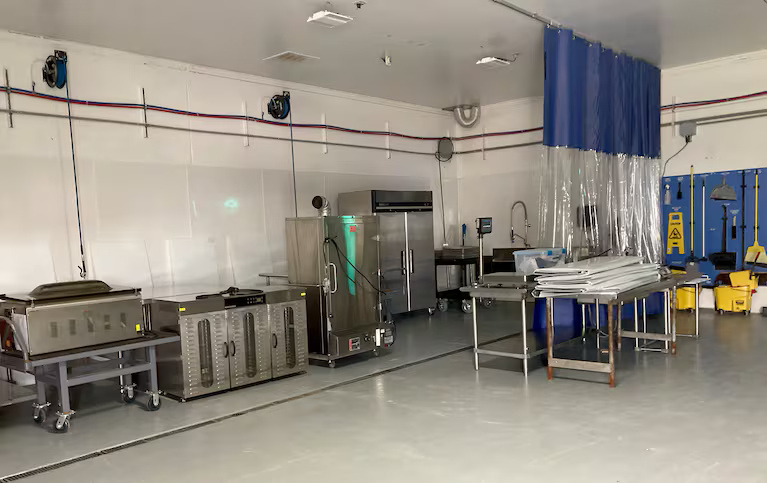
Small solutions
Five miles up the road from Local Ocean is an unassuming small warehouse with large shipping containers lined up next to it. Anderson bought the building in 2020 so Local Ocean would have a place to process big purchases of fish.
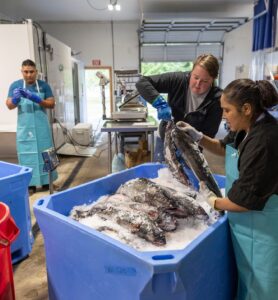
“When we buy 5,000 or 6,000 pounds of groundfish from a boat in one day, we were trying to manage that at the restaurant while we were also serving 900 customers a day,” Anderson said. “It was crazy. So when this building came up for sale, I was like, ‘Oh my God, I have to have it.’ ”
It created space for the restaurant to be able to filet, process and freeze the product coming in from Newport’s fleet. Too much space, actually.
Anderson invited a local food producers nonprofit, Central Coast Food Web, into the space. It’s now known as the Yaquina Lab: part food business development hub and part processing facility.
The idea is to provide space and equipment that fishers, processors and possibly restaurateurs need, if they want to take an active hand in directly serving locally caught fish to domestic consumers.
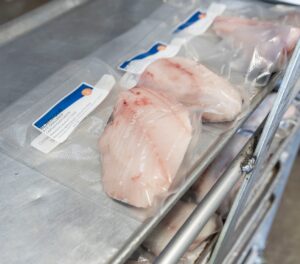
The efforts of people like Anderson and nonprofits like the Central Coast Food Web represent a small solution to the broader challenges facing the fishing industry in states like Oregon.
So far Local Ocean is Yaquina Lab’s anchor tenant, with just over a handful of other food startups renting space or time on the property.
“Any licensed seafood dealer can come and use that shared space,” Anderson said, “And rent space and equipment and storage by the hour, by the day, by the month.”
- This story originally appeared May 29, 2025 on Oregon Public Broadcasting.





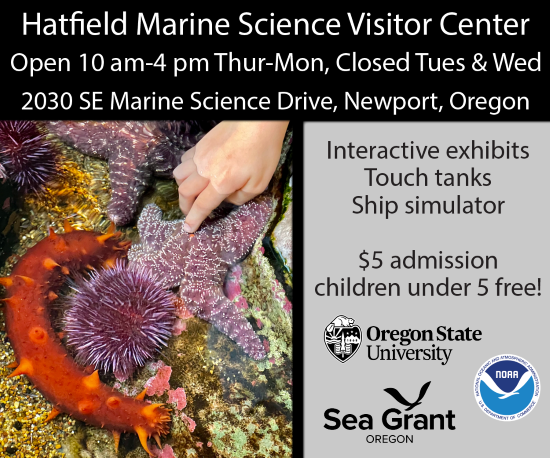







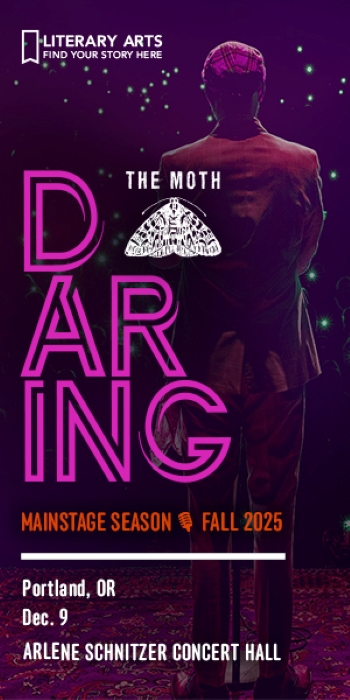
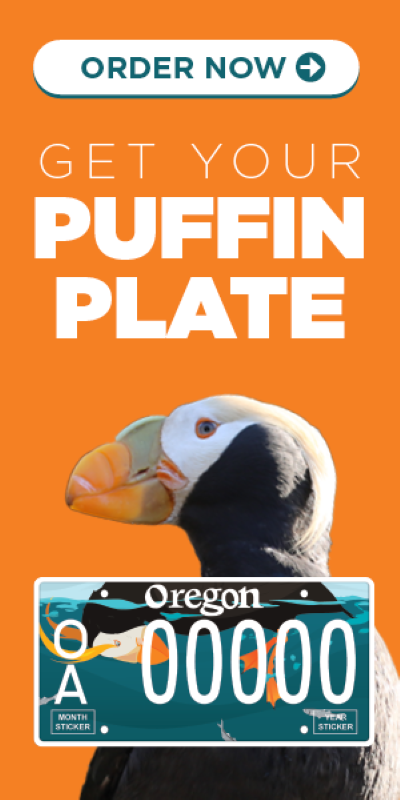



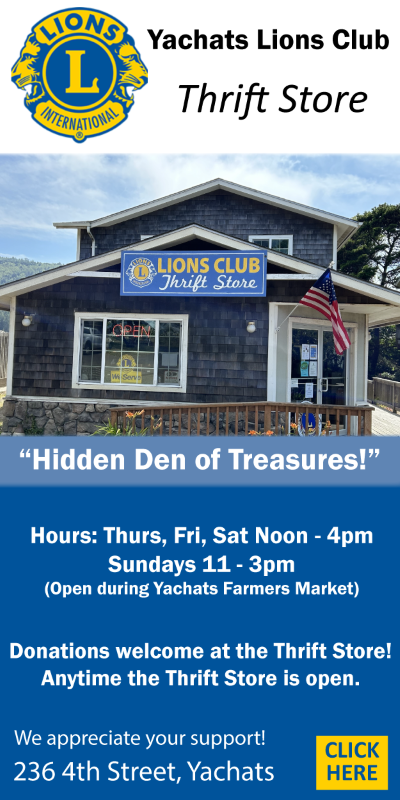
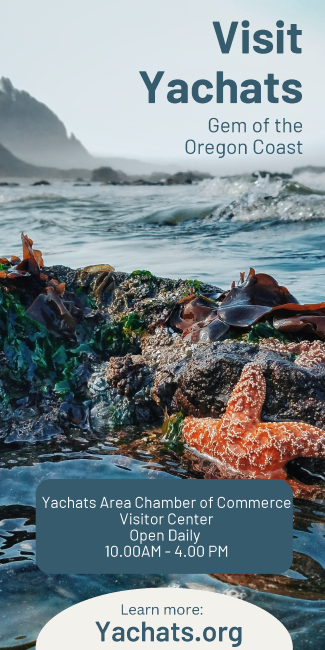
Fresh locally caught fish is one reason I live on the Oregon coast. Local Ocean offers prepackaged cuts of a variety of fish in reasonably priced selections including ling cod, sable, and halibut. Delicious. I’m looking forward to albacore season. Props to everyone who works so hard to promote our fisheries. Thank you!
I grew up in Newport. My dad’s best friend was a commercial fisherman, and as a young adult I had several friends who were commercial fisherman. I have seen the challenges the fisheries have faced over the decades, and they are daunting. I now live in another part of Oregon and used to purchase fresh fish here on a regular basis. The problem now is, it is much too expensive to buy except for a special occasion now and then. That may be the reason that local demand for fresh fish is so low, as the article states. Is it inflation, government regulations, or something else? I don’t know the answer, but it is sad that the people of Oregon can’t even access one of the most important and historic products our state produces.
Agree. The cheap farmed shrimp from places such as Thailand (which replaced mangrove habitat) is killing the Gulf shrimpers. WINCO carries Gulf wild-caught shrimp that is a more expensive although not too bad. I buy it but I can see how most people would go for the cheaper farmed shrimp.
Gulf shrimpers have the opposite opinion on tariffs. Imports are killing us.
One of the things I love about living here is the food. The ability to go to the dock and buy fresh fish is such a privilege.
I often ask at local restaurants why they have ahi tuna on the menu rather than the local, sustainably caught albacore. I still haven’t gotten an answer that actually answers that question.
Thank you for putting a spotlight on this issue.